How to find full answers for every CEO survey response
From the economy, geopolitics to even working from home, see what Australia’s business leaders told the CEO Survey 2025.
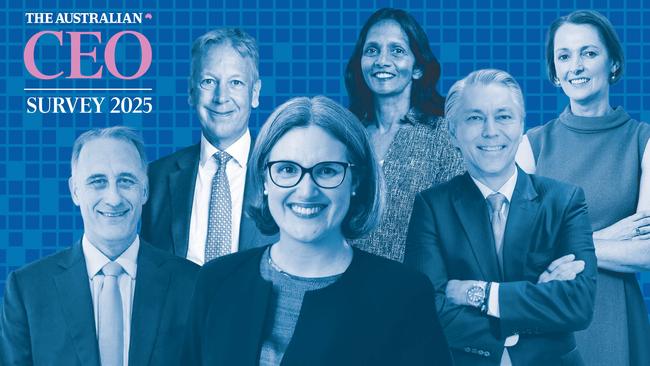
From the economy, geopolitics to even working from home, see what the nation’s business leaders told The Australian’s CEO Survey 2025. Follow the links to the individual responses.
We anticipate that 2025 will be the year that AI moves from experimentation to enterprise scale, and we’re already seeing some emerging leaders in this space, particularly in the financial services, resources and telecommunications sectors. At Accenture, we talk about AI as the next “digital”, and it will be truly transformative: our research shows AI will enable productivity enhancements across more than 900 different types of jobs, reducing many mundane tasks and freeing people to take on higher value work.
This transition is a huge undertaking and opportunity and will require significant investment from companies like AGL to maintain fleet, for new build and to increase the flexibility of our portfolio to help manage some of the changing peaks and troughs in the energy market.
Importantly, we are reinvesting into Australia’s energy transition.
The economy has slowed to a crawl with GDP up just 0.8 per cent over the year to the September quarter and we’ve seen the biggest slump in per capita GDP since the early 1990s recession, outside of the pandemic.

The Australian economy is softening as we head into 2025, with the headwinds of inflation and a higher interest rate environment impacting confidence from Australian households. GDP per capita is going backwards, and although inflation is coming down, it remains too high. We need real focus and discipline on the demand and supply sides of the economy to enable the forecasted interest rate cuts that will assist in stimulating the economy.
Globally this year the world passed through the most sustained cycle of higher interest rates in decades. Deep recessions haven’t been apparent, but cost of living challenges have persisted and many businesses have faced higher input costs.
Looking ahead into 2025, I would rate our economic momentum as mildly stronger than the year just gone. The main improvement we are starting to see is a pick-up in consumption after a period of weakness, which is promising.
But while the inflationary pressures have moderated and central banks have largely paused interest rate tightening, considerable uncertainty remains and we know many of our customers are feeling the impacts.
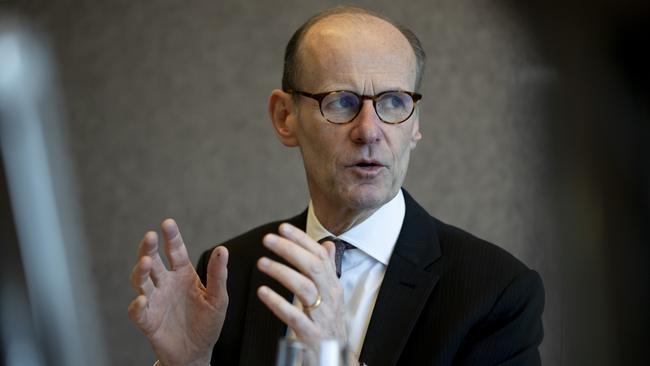
“We are focused on cost discipline and doing everything we can to ensure our part of the energy supply chain remains affordable and cost competitive. Market factors like reduced pressure in supply chains and an easing of inflation would have a big impact, but we also need to be disciplined in our own business.”
Arup Australia’s Kate West & Kerryn Coker
With infrastructure accounting for 9-10 per cent of Australia’s GDP, smoothing our pipeline plays a crucial role in boosting productivity. Streamlining the approvals process to bring projects to reality more quickly and to provide investor certainty needs to be a priority for Australia, particularly in the energy sector as public and private sectors strengthen their commitments to net zero.
It would be great to see comprehensive tax reform and the removal of regulatory hurdles to development, both of which would encourage productivity-enhancing investment and help drive economic recovery. Tax reform is not a new debate — we’ve had reports like the Ken Henry review which was published in 2010 — and yet there still hasn’t been real, comprehensive efforts made to reform a system that is increasingly unfit for purpose.
Overall, we’re seeing an improved macro outlook, with confidence increasing around both inflation and interest rates, and combined with current equity market valuations, that is bringing a more positive outlook for IPOs in 2025. It is early days but we’ve certainly seen some renewed activity in new listings in recent months.

Targeted, strategic investment in government owned rail track to improve the efficiency and resilience of rail freight transport infrastructure needs to be prioritised, especially as we face climate change and more frequent extreme weather events.
Covid taught us the harsh lesson that our national supply chains, particularly intercity rail
freight routes have been neglected and chronically underfunded for decades. It’s disappointing that on the east coast, which houses our largest ports and 80 per cent of the Australian population, rail’s share of land freight on the Brisbane-Sydney-Melbourne corridor is only around 11 per cent.
AustralianSuper’s Paul Schroder
Harnessing the productivity potential of AI in the real economy creates enormous potential upside. The ability to perform tasks that have previously required human involvement, automate process, personalise products and services, and streamline compliance will lead to new productivity gains and enable human workers to focus on more strategic, creative and collaborative work.
Australia Post has been focused on modernising our business, especially as the needs of our customers and the community have evolved. Despite the advancements in AI and robotics, we need to continue to build human capital and increase productivity, so investing in education and training is critical. Improving Australia’s skills base in areas like creative thinking, problem solving and teamwork, along with digital literacy will all help to enhance Australia’s productivity.
I’m particularly excited about the opportunities we’re seeing in the energy transition. This will likely be the single largest investment opportunity we see in our lifetime, as the global economy is reshaped for a low carbon future. It’s also an opportunity that spans our entire portfolio. We see direct investment opportunities in the infrastructure space, as well as other parts of our portfolio-like property, which will ensure the fund is more resilient, more efficient and better positioned to deliver strong returns. One recent example is our investment in Octopus Energy in the UK.
Bendigo Bank’s Richard Fennell
Bendigo Bank’s base case is for three rate cuts in 2025 beginning in May. By this time next year, we expect the cash rate to be around 3.5 per cent. In terms of our customers, we have seen some deterioration of savings buffers and that is not unexpected in an environment of elevated inflation and higher interest rates from the RBA.
Political leaders need to be examining the entire set of policy and regulatory settings and ask whether they are moving Australia towards being a more competitive place to invest and do business.
Australia needs to put in place an industrial relations system which enables flexibility, rewards hard work and builds productivity, a tax system which is stable and internationally competitive, and regulatory oversight that is effective and efficient so as to encourage investments that stimulate the economy.

Bank of Queensland’s Patrick Allaway
The geopolitical environment is increasingly uncertain, with many risks for Australia. Potential impacts of the change in the US presidency include a stronger US dollar (and a weaker Australian dollar), changes in trade flows affecting industries, and government regulations. Geopolitical uncertainty could create increased volatility across economic, inflation, and financial market outcomes. This necessitates a strong risk management capability, scenario-based solutions, and agility in our decision-making.
Winston Churchill was quoted has having said ‘Americans Will Always Do the Right Thing — After Exhausting All the Alternatives’ – or something to that effect.
In my personal opinion, Americans are in an ‘America first state’ mode now, and under Trump’s Presidency they will do what’s necessary to shore up the home front which will have consequences.
Australia faces a significant housing shortage, and the core issue is the lack of available land. Currently, land is being released gradually, which is not enough to meet demand.
The slow pace of land release, combined with high interest rates, means that many Australians are unable to afford mortgage repayments, let alone save for a deposit. Skilled labour shortages are also becoming a barrier to future growth and represent a challenge for the industry as it prepares for record spending on new housing.
I think there is an opportunity for Australia to invest in long-term infrastructure that sets the nation up for sustainable future growth. A good example is investment in multimodal transport infrastructure that not only delivers greater economic efficiencies but would also substantially reduce emissions for many businesses and industries that rely on transport and logistics.
The falling interest rate environment and the global pro-growth surge that has occurred since the US election has us feeling optimistic about 2025. Australia’s connection with the US through capital flows, our strategic alliance and at a corporate level will enable us to benefit from the clear post-election increase in activity.
Commonwealth Bank’s Matt Comyn
We have seen a lower growth, higher cost environment over the past couple of years which we know is impacting households and businesses. It is critical for the long-term health of the economy and the country that we bring inflation under control. We have seen some moderation of inflationary pressures, however underlying inflation remains above the Reserve Bank’s target band. Our economics team believe that rates may fall faster than the market expects.

The biggest headwind is the ever-increasing tax and duty rates being applied by most state governments. State government revenue actually falls in absolute terms as tax rates rise as it virtually stops dead capital investment and transaction markets – this will become most evident for States who are overtaxing property and distorting capital markets by deterring foreign investment. We need densification in all sectors, not just residential, if we are to arrest the affordability crisis facing many Australians.
Coles is well advanced in our use of artificial intelligence. We are investing and experimenting with the technology for the benefit of our customers, team members and business. We currently use it across our supply chain, merchandise and HR teams.
AI can identify patterns and trends in data to help us make the right decisions based on the experiences we are looking to create, whether it is for our customers or our team members.
The future of artificial intelligence is very exciting
Productivity stems from the competitiveness of economy, which is an integrated system. Systemic problem solving requires integrated solutions not point solutions. That is why improving productivity is difficult. This is a challenge we must take on to ensure Australia’s prosperity. Systemic improvement requires that we look at the tax system, regulation, skills and the efficiency of government spending. A single idea is not sufficient.
Deloitte Australia’s Adam Powick
The Australian economy is limping into the new year and may weaken further still. High inflation and interest rates have really seen households and business pull back on spending and investment, with migration the only thing keeping the economy’s head above water, but that’s forecast to fall in the coming months. Meanwhile, economic weakness in China is impacting the strength of our resources sector, which underpins much of our growth. In this environment we are overdue an interest rate reduction to stimulate business and consumer confidence but need government policy and spending settings to support this outcome.
Labour market reform that looks at mobility and the skills that business and the nation needs five to 10 years from now would be a good start. On the tax side, the various state based taxes and duties that single out foreign capital (which the nation needs) is counter-productive to creating the stable investment environment these long term investors need.
Australia is currently enduring one of the longest per capita GDP recessions in its history. This is placing pressure on households which are caught between higher interest rates and rising cost of living pressures. Consequently, momentum in the Australian economy is patchy with discretionary sectors such as Retail and Hospitality under significant pressure. A growing sentiment of uncertainty has emerged in agriculture with lack of clarity on key areas of agriculture and regional/rural Australia.
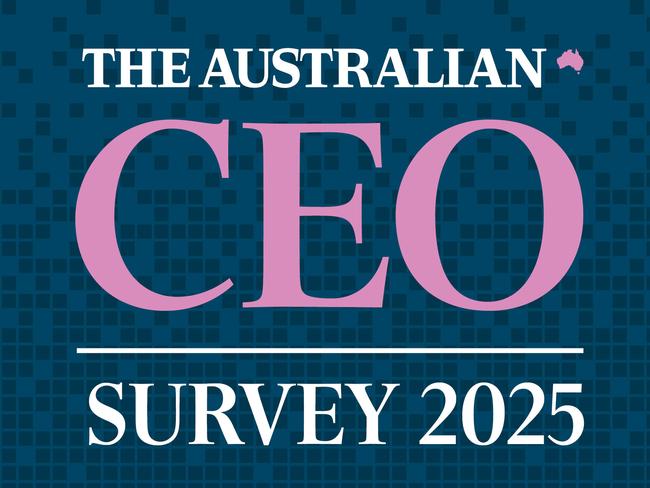
In our business, we see a shortage of good quality industrial infrastructure, because infrastructure generally is difficult and slow to develop which is constraining supply. Demand is holding up because it’s been driven by the need for greater productivity. What we want to see in the Australian economy is more emphasis on productivity and more encouragement and incentives for businesses to grow.
Global food supply and demand are finely balanced, and the fundamental drivers of GrainCorp’s business remain robust, as people always need to eat. While evolving US policies may shape the trading landscape, GrainCorp, along with the rest of Australia, benefits from the rules-based trading system. We remain committed to supporting the Australian government in advocating for free and fair trade practices that underpin global stability. Shifts toward protectionist policies or changes in tariffs could disrupt global supply chains and trade flows, affecting the export and import dynamics that are crucial to our operations at GrainCorp. On the other hand, efforts to streamline regulations in the US might create opportunities for more efficient trade, especially in commodities or goods where the US is a key market or partner.
Many of our members have felt the weight of higher mortgage repayments, rent and higher energy and food bills over the past year. The economy has been operating at a below-trend pace all year, where household consumption and weak homebuilding are offsetting government spending. For 2025, we expect official interest rates to be potentially 1 per cent lower than they are now, providing some relief to many of our members. However, if inflation remains high and wages rise accordingly, there’s a risk that interest rates may not be cut at all.
2025 is going to be a year of global change, and with this comes opportunity.
Supporting Australian businesses to trade and invest in international markets is our core purpose and we are excited to help clients further expand their footprint in a number of key international corridors. In the last two years the government’s focus on building relationships with growing economies has laid solid foundations for Australian businesses to continue to diversify trade relationships.
Insurance Australia Group’s Nick Hawkins
Australia urgently needs tax reform to stay competitive. Our current corporate tax rate of 30 per cent is increasingly out of step with global standards. If left unaddressed, there is a real risk this will deter business investment and stifle economic growth.
Incitec Pivot’s Mauro Neves de Moraes
Our biggest concern is securing long-term economic gas supply, an essential feedstock in the creation of ammonia, which we use to produce fertiliser for farmers and explosives for the mining sector. We support decarbonisation and the transition to cleaner forms of energy, but not at the expense of the local economy and the loss of thousands of direct and indirect jobs.
Our ability to secure economic gas supply is make or break for our operations.
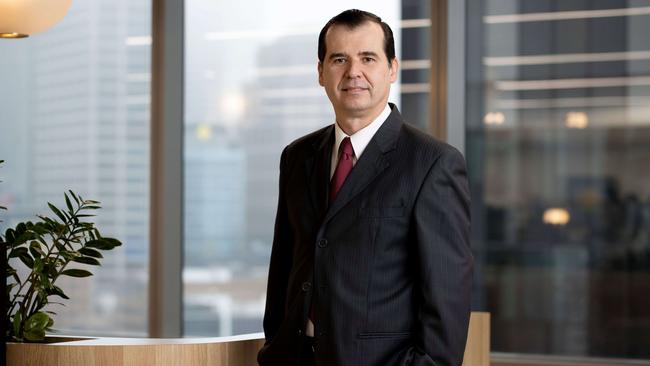
As we move into an AI- and technology-enabled future it is important that we have fit for purpose regulation that sets us up as a country to safely capitalise on the generative AI capability.
The burden of regulation for SMEs in Australia is a significant challenge, impacting the ability for SMEs to grow, innovate, and compete effectively.
When I speak with our customers, it’s the disproportionate challenges of compliance costs and the time and resources they need to navigate things like health and safety laws, employment laws, tax requirements, or even things like food and safety regulations, that are called out.
The SME sector is the backbone of our economy. We should be looking to reduce the red tape and make it easier for SMEs to thrive.
KPMG is “all-in” with the use of AI. The realisation of AI to be transformative to not only our business, but also our clients’ businesses excite us about the future. Responsible use of AI has the potential to lift productivity growth rates together with the quality of services provided. We will continue to invest heavily in developing AI-related services and advice for clients, as well as skills for our people, while taking great care to ensure the integrity and quality of these services.
Latitude Financial’s Bob Belan
We spend a lot of time talking about innovation but how much true innovation is happening is subject to genuine debate. How can we take more calculated risk as a country? Are our taxation settings as efficient as they could be? Are our policy settings promoting competition within sectors of the economy and choice for consumers? Which countries beyond the usual benchmarks have cracked the productivity code and what can we learn from them?
In our own business, we’ve seen cost pressures ease in certain areas. In Construction, material price increases have slowed to near pre-pandemic levels, though labour costs remain high. While price increases are stabilising, the new baseline is likely here to stay across the economy.

The Lottery Corp’s Sue van der Merwe
We’re at the stage where we are using and implementing AI across the business. It is giving us great results in tailoring our marketing to individual customers making it more customer-friendly and efficient. We have used machine learning in developing our models for early intervention to identify customers who may be at risk of potential gambling harm. This technology and approach is useful in monitoring operations and identifying patterns to help us in other parts of our business too.
Macquarie Group’s Shemara Wikramanayake
We are optimistic the Australian economy is turning the corner. Cost-of-living pressures for households are starting to ease as a result of tax cuts and lower inflation, which has begun to encourage a lift in consumer spending. We expect the RBA to ease monetary policy toward the middle of next year, which should help further ease the pressure on household budgets and provide some support to housing market activity.
Many of our customers experienced cost of living pressures this year, and we expect that to continue into 2025, even if there is a rate cut. While we weren’t immune to these pressures, our aim is to continue providing our customers with more value and support in their health, keep premium increases as low as we can and managing our own costs effectively. Across the health system we need to think differently and work together to address health costs that continue to outstrip general inflation.
Within our own business, we’ve seen construction cost inflation start to stabilise, but costs remain elevated – particularly for apartments and commercial assets. This is largely due to a shortage of skilled labour, which has been the biggest contributor of cost escalation and loss in productivity, coupled with a record number of subcontractor insolvencies throughout the year.
National Australia Bank’s Andrew Irvine
Nowhere is weak productivity being felt more than in the housing sector, where Australia cannot build enough houses, while building companies and property developers tell us they are struggling to make projects financially viable. There’s no easy fix to this national crisis. We need more skilled migrants and to be more innovative in the types of housing and methods of construction. An enhanced focus on skills and training is vital to lifting productivity by ensuring Australia has the skilled workforce needed for the future.
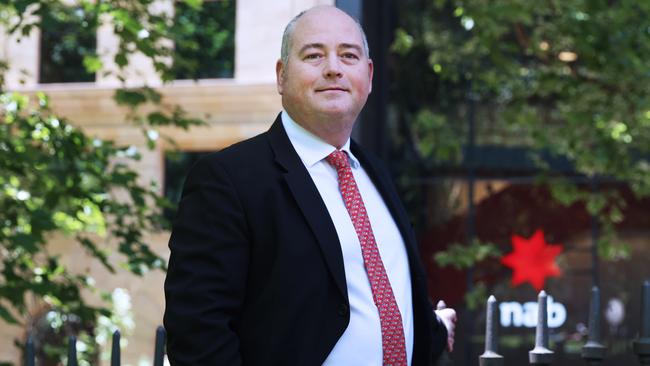
The number one economic issue Australians care most about is not the state of the national economy, but the very weak state of their own personal economy.
A lot of personal and business uncertainty exists due to previously unseen combinations of economic indicators. It is not only interest rates that are on hold but it feels like the entire country is on hold.
Northern Star Resources’ Stuart Tonkin
We saw a bit of a pullback in the gold price immediately after the US election though I don’t think we’re going to see much retraction in gold in the coming years. I would expect the Trump Presidency to lead to trade tensions and increased US government spending, which is likely to support a strong gold price in both USD and AUD currencies. The emergence of the crypto currencies impact is difficult to predict but I’m sure an ounce of gold will be worth at least 0.1 Bitcoin.
We must prioritise productivity initiatives to mitigate inflationary impacts and this needs to be supported by effective monetary policies and targeted government funding, balanced labour relations, and tax incentives for innovation, R&D, and rapid adoption of digital and automated technologies.
We require policy certainty across energy prices, industrial relations and ongoing support for future facing commodities to ensure the energy transition. A review of corporate taxation would go a long way in making Australia a more attractive destination for manufacturing investment
Origin Energy’s Frank Calabria
To deliver on Australia’s energy transition, while ensuring reliable, secure and affordable energy supply, requires us to look carefully at the design of the National Electricity Market.
Energy is fundamentally important to our economic and social wellbeing and decarbonisation of the industry is critical to lowering emissions.
Qantas Airways’ Vanessa Hudson
We’re continuing to see demand for premium leisure experiences and a return of more business travel, while Jetstar is benefiting from increased demand for low fares as many Australians grapple with the higher cost of living. Like many other businesses across the economy. inflation is having an impact on us and we are seeing cost increases coming through. We expect these to slow in the year ahead and have focused on offsetting some of these costs through efficiency gains, such as more fuel efficient aircraft and transformation.
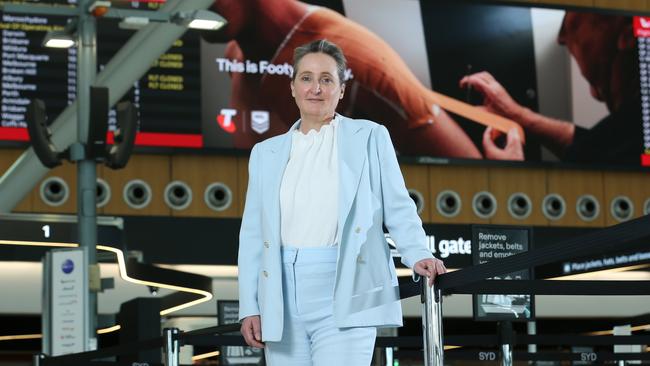
There is virtually nothing in the current workplace relations settings to promote productivity and it is almost impossible to negotiate productivity offsets as part of wage negotiations. That’s a seriously retrograde step and it will become more problematic as more and more EA’s come up for renegotiation. Restoring some balance and refocusing on unlocking productivity as a driver of our economy and our future prosperity must be high on the agenda as we head into the election.
Elevated government spending in the public sector and on infrastructure remains a risk to inflation. Rents are also contributing, and these are still rising because rental stock availability remains too low. If rates are to come down, then addressing these inflationary impacts needs to remain the focus.
As a global business, we often need to navigate changes in government. During the first Trump administration, there were some changes that were ultimately very favourable for us. One of the focuses of our business is supporting national developments, and we are working with a number of governments to understand what they want to achieve. While it’s too early to speculate – since the new government has not taken office – there is the possibility that these changes could be positive for our business.

Scentre Group’s Elliott Rusanow
The Australian economy enters 2025 having experienced an extended period of below trend growth. We’re not predicting where the cash rate might land next year. What we will say is we think that interest rates need to be materially lower for two reasons; first for monetary policy to be consistent with other fiscal policy settings, and second to support Australia’s long-term economic needs.
Falling productivity is a real threat to our economy and the standard of living enjoyed by Australians for many decades. Commodity exports, tax receipts and government spending underpin the economy and stagnant productivity is a threat to that going forward. For the energy transition and the economy more broadly, significant and sustained private investment is required. An uncompetitive tax regime, complex regulatory burden and market interventions have clogged the arteries of investment for more than a decade without delivering better outcomes for Australians.
One of the major drivers of inflation is government spending across the world. Australia is spending at record levels, and we really need to see lower expenditure and loweremployment growth from the government to reduce interest rates. Despite the growing government expenditure, GDP per capita has now been negative for seven consecutive quarters. The weakening economy should support the forecast rate cuts in 2025, however, we see greater risk to higher inflation and higher interest rates than consensus forecasts.
Australia has benefited greatly from a prolonged period of opportunity and success linked to the development of its natural resources. However, we’re now seeing regulatory burdens associated with environmental approvals, industrial relations, and skilled labour availability placing higher costs on Australian projects. At a time when more commodities are required to support the energy transition, we view this as negative.
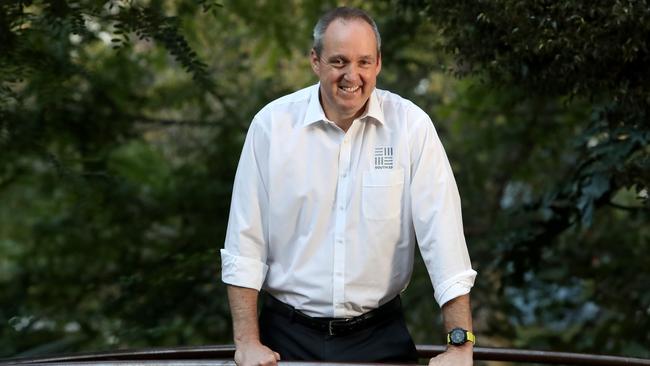
Suncorp was one of the pioneers of flexible working and acknowledges hybrid working is a key driver of our people’s engagement, attraction and retention. In an organisation as large and diverse as Suncorp, we know that a one size fits all approach simply won’t work. Our leaders are empowered to determine the right balance for their teams and the work they do, be that at home, in the office, or on the road. We are however looking at ways to ensure a more consistent spread in office attendance across the five days, particularly Mondays and Fridays.
Sydney Airport’s Scott Charlton
By 2050 we want to be an airport that welcomes 80 million passengers every year – that’s around double where we are today. We’re on an efficiency drive to make sure we are getting the most out of our existing infrastructure, but new infrastructure is going to have to do a lot of heavy lifting to meet the demand that’s coming at us. Our capital program will go from around $500m this year to more than $700m in 2025.
Mental health is a critical part of the productivity conversation. Recent claims data from Australia’s life insurers demonstrates the impact mental health is having on individuals, families and on national productivity, showing more Australians are permanently leaving the workforce due to mental ill-health than ever before. For us, it’s been the leading cause of claims in recent years. Community resilience is at the heart of productivity and our focus is clear – helping people through tough times and their recovery when illness or injury disrupts their lives.
The potential of the digital economy, and the opportunity that holds for Australia, is immense.
Policies that support innovation and digital transformation will be critical to ensure Australia maintains its competitiveness in the global market and grows its economy. To unlock this growth, it’s critical that our regulatory and policy settings evolve so that they continue to promote competition and protect consumers, while also encouraging investment and innovation in the underlying connectivity and digital infrastructure Australia will need for the next few decades.
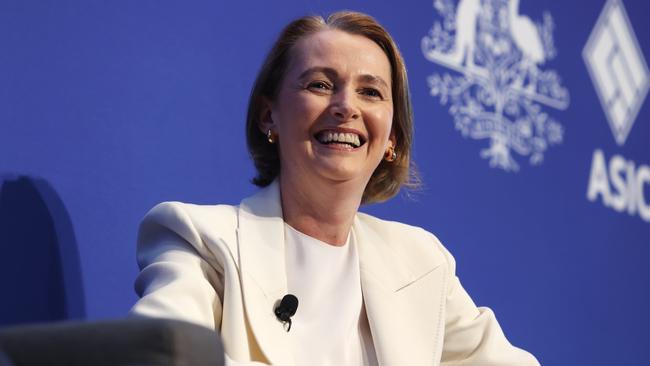
We have been trialling the use of AI agents in our Health business and seeing promising results, particularly for customer support. This year almost 8,500 requests have been started using our online chat platform; 45 per cent of these involved an AI agent with 51 per cent of those resolved without human intervention. This has highlighted a great transformational opportunity across our business which we’re excited to leverage further.
UBS Australasia’s Anthony Sweetman
Market sentiment and the outlook for transaction activity appears strong as we head into 2025 which hopefully will translate into generally strong conditions for UBS. Given the favourable outlook we expect to maintain our significant level of investment in Australia with the potential increase in areas that have further growth opportunities.
Most Australians would welcome an interest-rate cut, but a decrease will not solve all the issues that are holding back the nation today.
As we have seen in other nations, it takes time for interest rate movements to translate into changes in household spending and business investment, as these movements have a lag effect. We are focused on areas within our control – ensuring our businesses are operating as efficiently as possible and our balance sheet is strong to deal with a range of economic scenarios.
We don’t believe there will be any rate cuts in the first few months of 2025. At this point it is more likely in the second half. I think there’ll be two cuts at best but of course it will depend how inflation, unemployment and the slowing economy pan out in the new year. Our economists expect the rate to find its way down to 3.35 per cent by the end of 2025.
There is a huge opportunity to encourage more young people to embark on software engineering careers, ready to power Australia’s IT sector for the long term. However, to reach a wider range of diverse candidates we need to offer a number of training pathways, from TAFE to university, combined with industry co-operation to offer on-the-job learning (such as our own Earn & Learn program), and most importantly help more school students have an enjoyable experience learning how to code (in our out of school) so that they might seriously consider it as a future career option.
All businesses, whether in the energy sector or elsewhere, need certainty and stability in fiscal policy and regulatory settings in order to invest with confidence. Unfortunately, outdated regulation is being exploited by activists using lawfare to slow or stop new investment in Australia.
If we are serious about protecting Australian jobs, encouraging investment and ensuring our energy security, we need a policy framework for gas and other sectors that provides timely consideration of proposals, stable tax and fiscal settings and is not vulnerable to manipulation by activist groups.
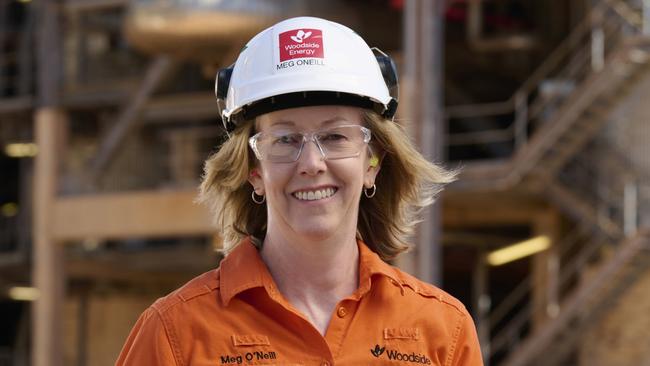
Entrepreneurs in all sectors form the backbone of employment and create the future growth engines of our economy. If they can retain more of their earnings to help them withstand the ongoing inflationary cost pressures, they will be better placed to succeed. further tax deductions, along with maintaining or increasing access to instant asset write-offs, will ensure they have the tools required to set their business up for sustained success.
We acknowledge the significant potential of Generative AI (GenAI) and have been exploring and experimenting across a range of opportunities ensuring appropriate safeguards are in place for responsible use.
We saw great engagement from a broad cross-section of our Australia and New Zealand teams for our GenAI-themed hackathon in 2024. Some ideas from the hackathon are moving towards deployment during the next half.
As with any use of technology, there needs to be a clear value proposition for us to progress a use case. We are seeing value in the areas we are taking beyond the experimentation phase, including applications in customer experience, marketing and engineering.
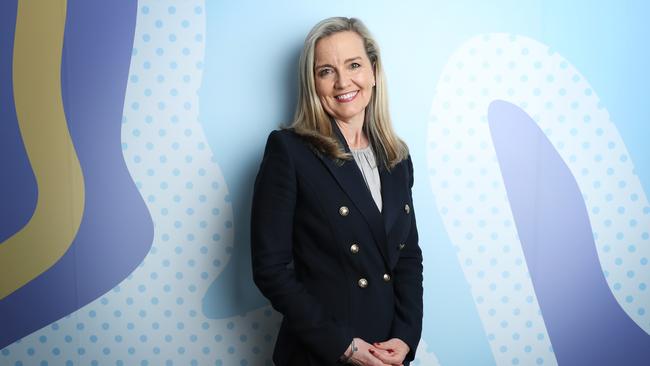


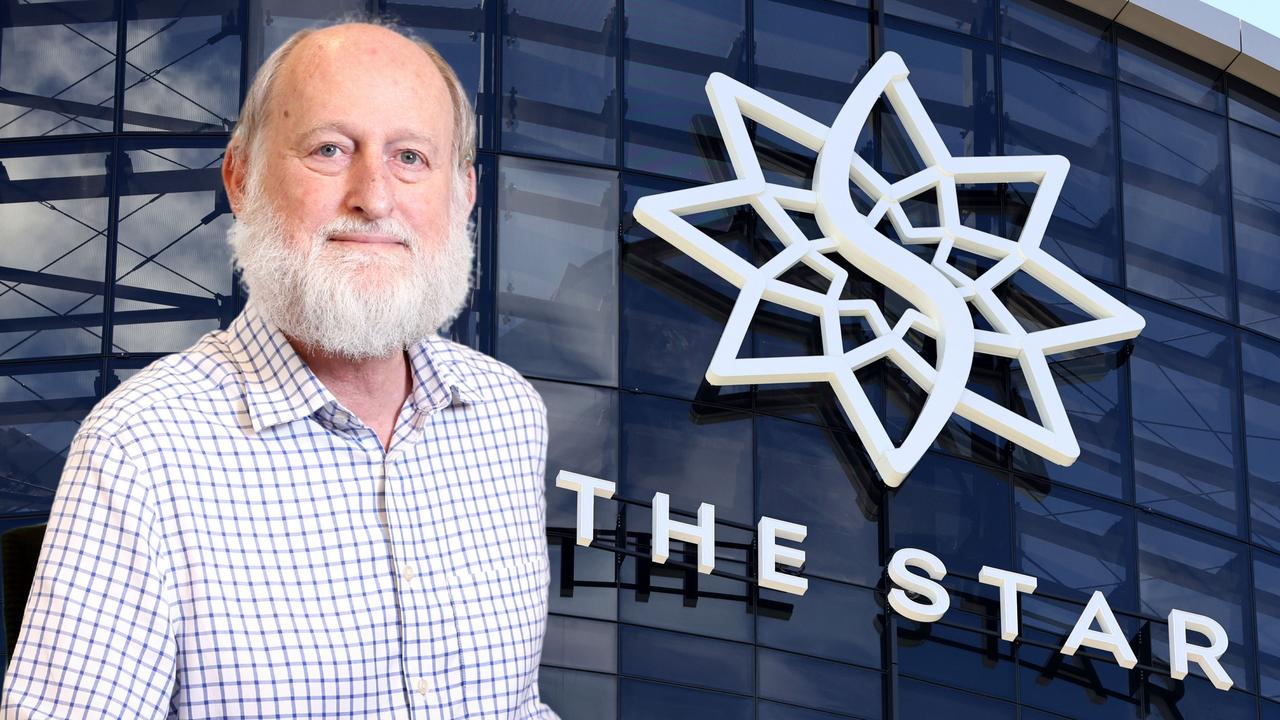

To join the conversation, please log in. Don't have an account? Register
Join the conversation, you are commenting as Logout